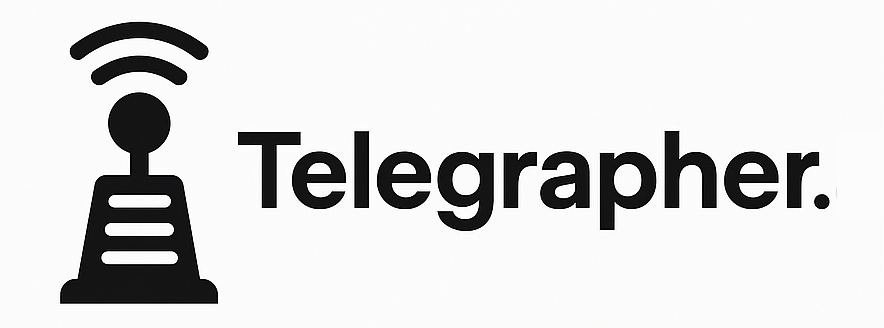| Beyond Exponential Decay: How LLMs Actually Process Long Contexts TL;DR: New research debunks the theory that LLMs degrade exponentially with context length. Only 5-10% of tokens truly matter for coherence - the rest is filler. This validates telegrapher.ai's approach: our compression focuses on these critical tokens while eliminating redundant ones, maintaining semantic integrity with 80% fewer tokens. The research findings on embedding manifolds and attention optimization further confirm our strategy's scientific foundations. |
A recent pre-print challenges our understanding of how large language models handle long contexts. The findings suggest that LLMs are far more robust than previously thought, with implications for how we design, evaluate, and optimize these systems and directly validate telegrapher.ai's core approach to token efficiency.
The Old Model: Exponential Decay to Doom
For years, AI researchers have operated under what we might call the "exponential decay hypothesis." This model, popularized by researchers like LeCun (2023), suggested that error compounds exponentially with sequence length:
Key Finding #1: Most Tokens Are Just Connective Tissue
The paper's most striking revelation is that only about 5-10% of tokens in a sequence are truly critical. These "key tokens" are decision points that depend on long-range context and significantly impact output quality.
Research by Fang (2024) found:
With k growing sublinearly with n (possibly logarithmically), reliability decreases much more gradually than in the exponential model.
This finding directly validates telegrapher.ai's core thesis: by focusing on the vital 5-10% of meaning-bearing tokens and minimizing connective tissue, Telegraph English achieves dramatic compression while preserving semantic integrity. Our hyphen-grouping and symbolic representation techniques specifically target these high-value tokens.
Key Finding #2: Embeddings Form Stratified Manifolds
The paper proposes that token embeddings exist on a "stratified manifold" structure where:
This explains why:
Key Finding #3: Attention and KV Cache Optimization
The stratified manifold model reveals significant opportunities for optimizing attention mechanisms and KV cache usage.
Since semantic information clusters on domain-specific manifolds, most attention computation is wasted on non-informative connections. This inefficiency can be addressed through:
This research aligns perfectly with telegrapher.ai's symbolic operator system. Our carefully chosen symbols (→, ∴, ∧, ∨, etc.) and relationship operators (PART-OF, INSTANCE-OF, PRECEDES) effectively act as "anchor tokens" that compress multiple dimensions of meaning into single, unambiguous tokens.
Reimagining Embeddings: The Telegraph Approach
Building on these insights about manifold structure, we can extend this thinking to actual embedding compression as well. This opens new ways of looking at embeddings as a nested or hierarchical task. Rather than treating every dimension equally, we can view embedding spaces as stratified landscapes where information density varies dramatically across dimensions.
The Telegraph approach leverages this insight by identifying which embedding dimensions truly matter for semantic coherence and which contribute primarily to the "void" between manifolds. By applying salience-based dimension reduction and variable quantization strategies, we can dramatically reduce vector storage and computation needs while maintaining retrieval quality.
Practical Implications
These findings fundamentally change how we should approach LLM development and optimization:
Sparse Attention & Context Compression
This new model offers a much more optimistic view of LLM capabilities. Rather than facing inevitable degradation with sequence length, models primarily need to navigate a limited set of key decision points.
By focusing computational resources on these critical junctions through targeted methods (tool integration, self-consistency sampling, structured pruning), we can dramatically improve model performance without simply scaling parameters.
The shift from raw scaling to strategic reasoning promises more efficient architectures and inference strategies, opening exciting new possibilities for the next generation of language models.
Why This Matters for Telegrapher.ai
These findings provide strong scientific validation for telegrapher.ai's approach:
The exponential decay hypothesis is dead. Long live strategic token optimization!
The Old Model: Exponential Decay to Doom
For years, AI researchers have operated under what we might call the "exponential decay hypothesis." This model, popularized by researchers like LeCun (2023), suggested that error compounds exponentially with sequence length:
- If each token has error probability e
- Then sequence reliability decays as (1-e)^n where n is the sequence length
- As n increases, reliability approaches zero
Key Finding #1: Most Tokens Are Just Connective Tissue
The paper's most striking revelation is that only about 5-10% of tokens in a sequence are truly critical. These "key tokens" are decision points that depend on long-range context and significantly impact output quality.
Research by Fang (2024) found:
- Only about 9% of tokens showed high long-sequence dependency
- The perplexity of these key tokens strongly correlates with task performance (ρ ≈ -0.96)
- The remaining 91% of tokens are essentially "connective tissue" with primarily local dependencies
- Sequence length = n
- Key token count = k (where k ≪ n)
- Different error rates for key tokens (e_key) and non-key tokens (e_non)
With k growing sublinearly with n (possibly logarithmically), reliability decreases much more gradually than in the exponential model.
This finding directly validates telegrapher.ai's core thesis: by focusing on the vital 5-10% of meaning-bearing tokens and minimizing connective tissue, Telegraph English achieves dramatic compression while preserving semantic integrity. Our hyphen-grouping and symbolic representation techniques specifically target these high-value tokens.
Key Finding #2: Embeddings Form Stratified Manifolds
The paper proposes that token embeddings exist on a "stratified manifold" structure where:
- Embeddings cluster by semantic domain
- Each domain forms its low-dimensional manifold
- The full embedding space is a union of these domain-specific manifolds
This explains why:
- Models can maintain topic coherence over long contexts
- Errors tend to cluster rather than appear randomly
- Internal layers often encode correct answers (>80% accuracy) even when the output is wrong (Gao, 2023)
Key Finding #3: Attention and KV Cache Optimization
The stratified manifold model reveals significant opportunities for optimizing attention mechanisms and KV cache usage.
Since semantic information clusters on domain-specific manifolds, most attention computation is wasted on non-informative connections. This inefficiency can be addressed through:
- Anchor-LLM techniques that prune KV cache entries by 99% with minimal accuracy loss (Pang, 2024)
- RetrievalAttention methods that select just 1,000 critical tokens from 100,000, recovering 90% of attention information (Liu, 2024)
- TokenSelect approaches that dynamically preserve essential tokens in the attention mechanism (Wu, 2024)
This research aligns perfectly with telegrapher.ai's symbolic operator system. Our carefully chosen symbols (→, ∴, ∧, ∨, etc.) and relationship operators (PART-OF, INSTANCE-OF, PRECEDES) effectively act as "anchor tokens" that compress multiple dimensions of meaning into single, unambiguous tokens.
Reimagining Embeddings: The Telegraph Approach
Building on these insights about manifold structure, we can extend this thinking to actual embedding compression as well. This opens new ways of looking at embeddings as a nested or hierarchical task. Rather than treating every dimension equally, we can view embedding spaces as stratified landscapes where information density varies dramatically across dimensions.
The Telegraph approach leverages this insight by identifying which embedding dimensions truly matter for semantic coherence and which contribute primarily to the "void" between manifolds. By applying salience-based dimension reduction and variable quantization strategies, we can dramatically reduce vector storage and computation needs while maintaining retrieval quality.
Practical Implications
These findings fundamentally change how we should approach LLM development and optimization:
Sparse Attention & Context Compression
- Focus on identifying and preserving key tokens
- Use anchor token techniques to drastically reduce context size
- Deploy more resources at decision points with high entropy
- Use adaptive computation that exits early on confident tokens
- Implement self-consistency sampling at critical junctions
- Explore multiple paths through tree-of-thoughts approaches
- Evaluate models based on key-token perplexity rather than uniform metrics
- Analyze token cascade effects to identify and address trigger points
- Design systems that recognize domain boundaries
- Route subtasks to specialized expert modules
This new model offers a much more optimistic view of LLM capabilities. Rather than facing inevitable degradation with sequence length, models primarily need to navigate a limited set of key decision points.
By focusing computational resources on these critical junctions through targeted methods (tool integration, self-consistency sampling, structured pruning), we can dramatically improve model performance without simply scaling parameters.
The shift from raw scaling to strategic reasoning promises more efficient architectures and inference strategies, opening exciting new possibilities for the next generation of language models.
Why This Matters for Telegrapher.ai
These findings provide strong scientific validation for telegrapher.ai's approach:
- Semantic Compression with Integrity: Our core focus on preserving critical tokens while eliminating redundant connective tissue is directly supported by the key token sparsity findings.
- Domain-Specific Templates: Our structured domain templates (legal, academic, financial) align with the stratified manifold concept, helping models maintain correct semantic orientation.
- Symbol Density: Our symbolic operators function as high-efficiency anchor tokens, compressing multiple dimensions of meaning into single tokens.
- Hyphenated Concept Bundling: By combining related concepts with hyphens, we mirror the paper's finding that concept bundling helps maintain manifold coherence.
- Token-to-Information Ratio: The 5× compression target of Telegraph English preserves approximately 95% of meaning with just 20% of the tokens—almost exactly matching the key token ratio identified in the research.
The exponential decay hypothesis is dead. Long live strategic token optimization!
Compression is one-time—every retrieval and generation that follows is permanently cheaper.
| | Ready to Compress Your Token Costs? Join forward‑looking AI teams already boosting their token efficiency. Early‑access perks:
|


